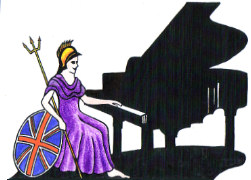Teachers, Accompanists and Piano Entertainers in the UK

UK Piano Page

154 High Street
Cardiff, South Glamorgan ll49 9NU
Wales/Cymru
PianosCymru is an award winning piano dealership
45 Rosemount Viaduct
Rosemount
Aberdeen, Aberdeenshire AB251NQ
Scotland
Kemble Centre of Excellence other leading brands
98 Canongate
The Royal Mile
City of Edinburgh, Edinburgh EH8 8DD
Scotland
For over 40 years we have been known as Edinburgh
3 Canal Street
Paisley, Renfrewshire PA1 2HD
Scotland
P. S. Pianos. A specalist piano shop. Being a
117 Narborough Rd
Leicester, Leicestershire LE3 0PA
England
Keysound Looking for music shops in Leicester? We
Music Festival for performers and guests Our 10th
18-06-2022 01:30PM
The Morecambe Bay Piano Group was set up to extend
11-12-2021 02:00PM
The Morecambe Bay Piano Group was set up to extend
08-01-2022 02:00PM
The Morecambe Bay Piano Group was set up to extend
12-02-2022 02:00PM